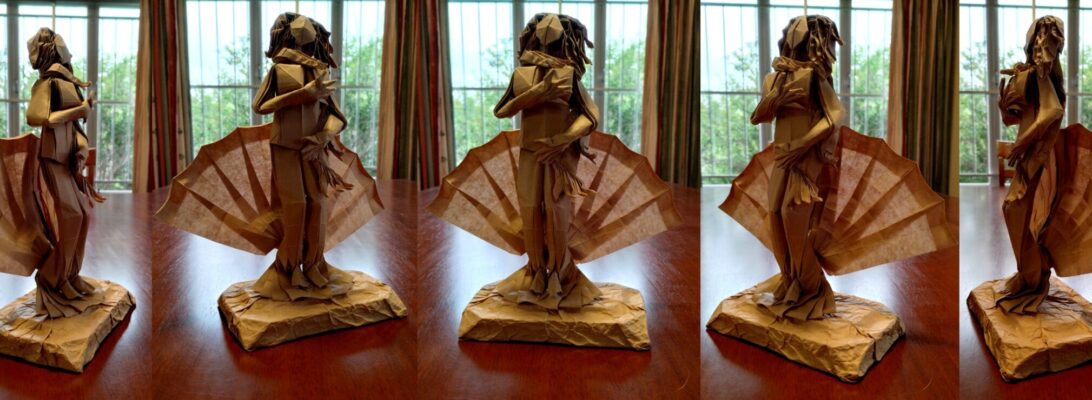There is so much happening in the world of Origami design, it is amazing to see new models emerging of every subject imaginable. I am working on editing/test-folding a bunch of Chinese diagrams currently, and thought I should fold this beauty to check on the sequence in the diagrams:

I started with 2x 45cm squares of Kraft – intending to fold BOTH the landed and flying versions of this model (yes – 2 different forms in the same model!), reached a part of the diagram I could not get past – I ruined, ragequitted and snowballed one of the sheets in frustration … only to realise the impasse just required a different view of the model.

Plunging on, through a challenging sequence, I muddled to the end and the result is quite amazing. I like that someone has focussed on the “on the ground” version of a model usually depicted in flight with wings extended. These critters were land dwelling, occasionally in the air, and their body morphology is full whack – prolly why they no longer exist (except as remnant critters like bats). Tapejara’s were thought to be particularly agile fliers and formidable predators, remnants of these have been found in Brazil.

This is part of an astonishing collection of new designs coming soon as a book from origami-shop.com and showcases some amazing layer /sheet management. I _almost_ want to go back and now fold the flying version of this model … almost.
Fun, challenging fold. I think folding this critter much smaller represents a huge challenge – the pleats that form the back legs/toes at this size ended up being 4mm – my fat clumsy fingers struggled to fold these accurately (and you form these pleats part way through the sequence – not in pre-creasing). Going smaller will be “interesting” for a more nimble folder.





